
Roots
Beneath the surface of our daily lives, where the world slows its relentless pace, a quiet, intricate dance unfolds within our very being. It is in the hush of night, as the conscious mind drifts into slumber, that our hair, too, enters a realm of profound regeneration and vital activity. For those of us with textured strands, a lineage woven through history and identity, understanding this nocturnal connection to our follicles is not merely academic; it holds the key to cultivating true vitality from the very source. This exploration begins at the most elemental level, seeking to illuminate the foundational mechanisms by which our sleep patterns whisper secrets to the very roots of our hair.

The Hair Follicle ❉ A Living Architecture
The hair follicle, a remarkable micro-organ, lies nestled within the dermis, a tiny powerhouse responsible for producing each individual strand. Far from being a static structure, it represents a dynamic ecosystem, constantly engaged in a cycle of growth, rest, and renewal. At its base, the dermal papilla, a cluster of specialized cells, acts as a command center, receiving signals from the body and dictating the follicle’s activity. Surrounding it are various cell types, each with a specific role in synthesizing the proteins that form the hair shaft and anchoring it securely.
This intricate arrangement is particularly relevant for textured hair, where the follicle’s unique shape—often elliptical or kidney-bean shaped—determines the curl pattern and influences how nutrients are delivered and waste is removed. The health of this foundational architecture directly dictates the strength, elasticity, and eventual appearance of our hair.
During our waking hours, these follicles are under a constant barrage of environmental stressors and styling manipulations. The nighttime offers a reprieve, a period of reduced mechanical stress and an opportunity for cellular repair and metabolic processes to operate optimally. It is during these hours that the body prioritizes restorative functions, channeling energy and resources to areas requiring rejuvenation, including our hair follicles.

Rhythms of Growth ❉ Understanding Cycles
Hair growth does not proceed in an uninterrupted flow; rather, it follows a distinct cyclical pattern, a biological rhythm inherent to all mammalian hair. These cycles, while individual to each follicle, broadly comprise three main phases ❉
- Anagen ❉ This is the active growth phase, where hair cells divide rapidly, adding length to the strand. For scalp hair, this phase can span several years.
- Catagen ❉ A transitional phase, relatively short, where growth ceases and the follicle prepares for rest.
- Telogen ❉ The resting phase, during which the hair strand remains in the follicle but no active growth occurs. Eventually, the old hair sheds, making way for new anagen growth.
The delicate balance and duration of these phases are profoundly susceptible to internal bodily states. Disruptions in sleep, for instance, can tilt this balance, potentially shortening the anagen phase or prematurely pushing follicles into the telogen phase, leading to increased shedding and a perceived lack of growth. Understanding these inherent rhythms allows for a deeper appreciation of sleep’s quiet yet potent influence.
The hair follicle, a dynamic micro-organ, relies on the quietude of sleep for its essential cycles of growth and repair.

Sleep’s Quiet Influence on Cellular Renewal
Sleep is far more than a period of inactivity; it is a time of intense cellular repair and regeneration throughout the body, and hair follicles are no exception. During deep sleep, the body releases growth hormone, a potent anabolic agent that stimulates cell reproduction and regeneration. This hormone plays a significant part in the proliferation of matrix cells within the hair follicle, which are responsible for hair shaft production. A consistent lack of sufficient, restorative sleep can hinder the adequate secretion of this hormone, thereby compromising the follicle’s ability to produce robust, healthy hair.
Beyond growth hormone, sleep also influences blood circulation. During rest, the body optimizes blood flow, ensuring that essential nutrients and oxygen reach peripheral tissues, including the scalp and hair follicles. Compromised circulation due to poor sleep can mean a diminished supply of these vital elements, directly impacting the follicle’s metabolic activity and its capacity for healthy hair production.

Why Our Textured Strands Listen Differently
Textured hair, with its unique structural characteristics, may exhibit particular sensitivities to disruptions in these foundational processes. The often coily or kinky structure of textured hair means that each strand can be more prone to dryness and breakage, requiring an even more robust internal support system. The elliptical shape of the follicle, while giving rise to our beautiful curl patterns, can also present challenges in nutrient delivery if microcirculation is compromised.
Furthermore, textured hair is often managed with specific styling practices that can exert mechanical stress. When the underlying follicle health is compromised by inadequate sleep, the hair’s resilience to these external factors can be significantly diminished, leading to increased fragility and a perceived stagnation in growth. A well-rested body, supporting vibrant follicles, thus forms a critical underpinning for the strength and beauty of textured hair.
| Hormone Growth Hormone |
| Primary Role in Hair Stimulates cell reproduction in hair matrix. |
| Sleep's Connection Released during deep sleep; insufficient sleep reduces levels. |
| Hormone Cortisol |
| Primary Role in Hair High levels can suppress hair growth, induce telogen. |
| Sleep's Connection Chronic sleep deprivation elevates cortisol. |
| Hormone Melatonin |
| Primary Role in Hair Antioxidant, may directly stimulate hair growth. |
| Sleep's Connection Regulates sleep-wake cycle; topical applications show promise. |
| Hormone Understanding these hormonal rhythms underscores sleep's critical influence on hair vitality. |

Ritual
As the sun dips below the horizon, inviting the soft embrace of twilight, we often turn our thoughts to the routines that mark the close of our day. For our hair, particularly textured hair, this transition from day to night presents not merely an end to external activity but a profound opportunity for restoration. The rituals we cultivate around sleep, both conscious and unconscious, wield a quiet yet potent influence over the health and vibrancy of our strands.
It is a gentle reminder that true hair care extends beyond the products we apply; it resides in the mindful practices that safeguard our hair through the hours of rest. This section explores how deliberate nighttime habits can become a powerful ally in supporting follicle health and encouraging growth.
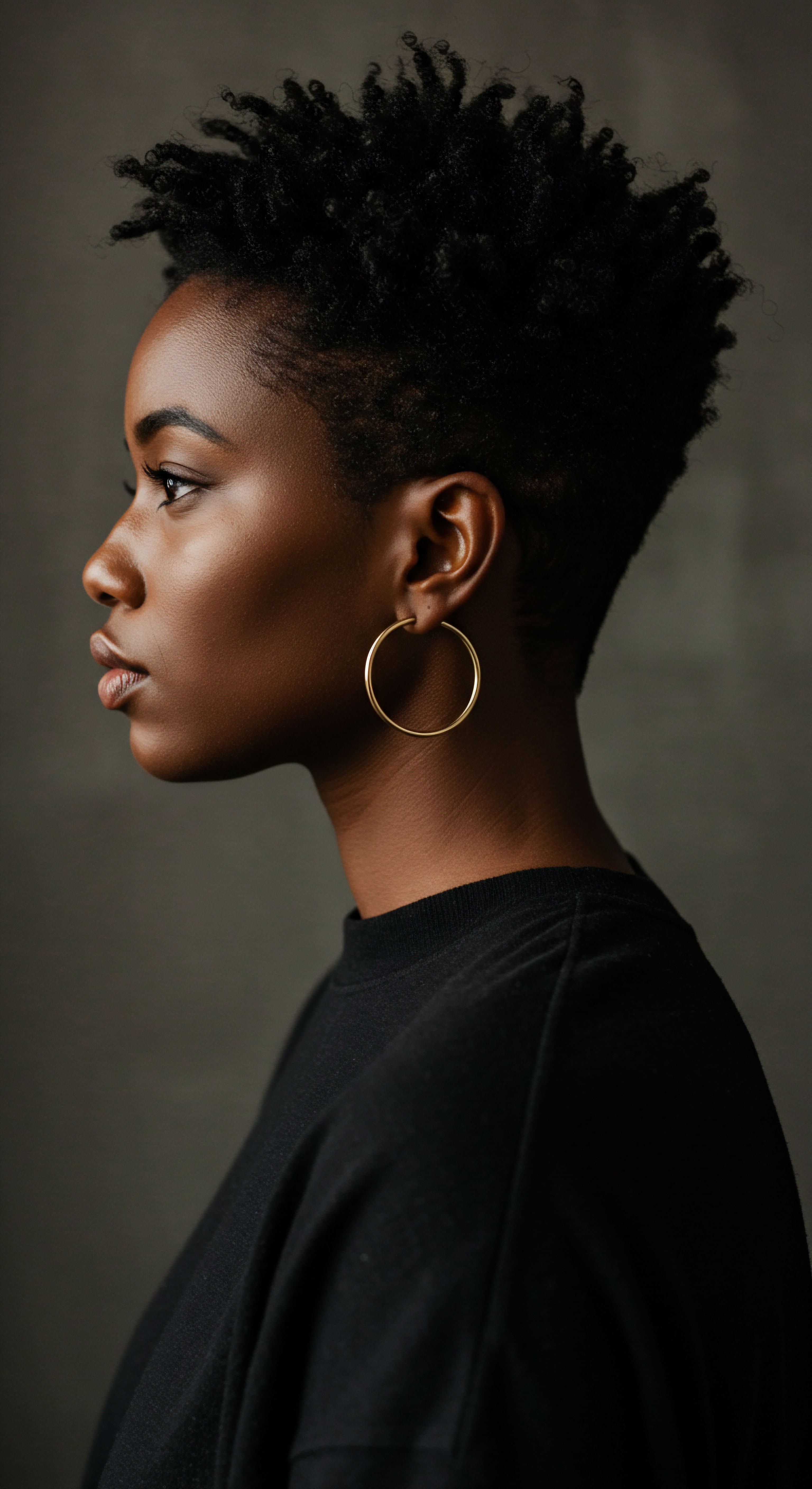
Crafting a Nocturnal Hair Sanctuary
The environment in which we sleep plays a surprisingly significant part in our hair’s nightly experience. The friction generated by tossing and turning against abrasive surfaces can lead to cuticle damage, breakage, and the weakening of hair strands, particularly for delicate textured hair. Establishing a ‘hair sanctuary’ at night means consciously minimizing these mechanical stressors.
This extends to the temperature of our sleeping space, as excessively dry or cold air can strip moisture from hair, leaving it vulnerable. Conversely, a too-humid environment might encourage fungal growth on the scalp, which can compromise follicle health.
A serene sleeping environment, one that promotes uninterrupted rest, indirectly supports hair vitality. When the body can settle into a rhythm of deep sleep, it optimizes the restorative processes mentioned earlier, including the balanced secretion of hormones and efficient nutrient delivery to the follicles. This peaceful atmosphere, free from excessive light or noise, becomes a silent partner in our hair’s nightly repair work.

The Silk and Satin Guardians ❉ Bonnets and Pillowcases
Perhaps one of the most celebrated and practical rituals for textured hair is the use of silk or satin head coverings and pillowcases. This practice is not merely a preference; it is a strategic defense against the mechanical wear and tear that can occur during sleep. Unlike cotton, which can absorb moisture from hair and create friction due to its fibrous weave, silk and satin possess a smooth surface. This allows hair to glide effortlessly, significantly reducing tangling, breakage, and frizz.
For textured hair, which often has an open cuticle layer, moisture retention is paramount. The non-absorbent nature of silk and satin helps to preserve the hair’s natural oils and any applied conditioning treatments, ensuring that strands remain hydrated throughout the night. This sustained hydration directly contributes to the hair’s elasticity and strength, making it less prone to breakage and supporting overall follicle health by reducing stress on the hair shaft.
Consider the subtle yet significant shift this simple habit introduces. It transforms a potentially damaging nightly interaction into a protective ritual, safeguarding the very integrity of the hair from root to tip.
Intentional nighttime practices, such as using silk head coverings, serve as a protective embrace for textured hair, preserving its delicate moisture and structure.

Dietary Echoes in Our Rest
The nutrients we consume throughout the day lay the groundwork for our body’s ability to regenerate and repair during sleep. A diet rich in vitamins, minerals, and proteins provides the essential building blocks for healthy hair follicles. Conversely, nutritional deficiencies can impede these processes, making the follicles less resilient to the stresses of inadequate sleep.
Specific nutrients play a direct part in supporting the sleep cycle itself. Magnesium, for instance, is known for its calming properties and its contribution to deeper, more restorative sleep. B vitamins, particularly B6, are involved in melatonin production, the hormone central to regulating our sleep-wake cycle.
When our diet supports sound sleep, it indirectly bolsters the follicular environment. Ensuring a balanced intake of these vital elements becomes a silent ritual that enhances both our rest and our hair’s vitality.

Mindful Practices for Deeper Slumber
Beyond the physical aspects, the quality of our sleep is profoundly affected by our mental state. Chronic stress and anxiety can lead to fragmented sleep, reducing the time spent in the crucial deep and REM sleep stages where most restorative processes occur. Cultivating mindful practices before bed can help calm the nervous system, paving the way for more profound rest.
This could include a warm bath, gentle stretching, reading a calming book, or a short meditation. The goal is to signal to the body that it is time to unwind, detaching from the day’s demands. For hair, this translates to a body better equipped to release the necessary growth hormones, regulate cortisol levels, and direct energy towards cellular repair. A calm mind, therefore, lays the foundation for a body that can truly rest, allowing the hair follicles to conduct their vital nocturnal work without impediment.
| Material Cotton Pillowcase |
| Key Benefit Breathable |
| Hair Type Suitability Generally less suitable for textured hair due to friction and moisture absorption. |
| Material Silk Pillowcase |
| Key Benefit Reduced friction, moisture retention |
| Hair Type Suitability Excellent for all hair types, especially textured and delicate strands. |
| Material Satin Bonnet |
| Key Benefit Protects entire head of hair, maintains style |
| Hair Type Suitability Ideal for textured hair to preserve styles and minimize breakage. |
| Material Choosing the right sleep surface can significantly impact hair health and longevity. |
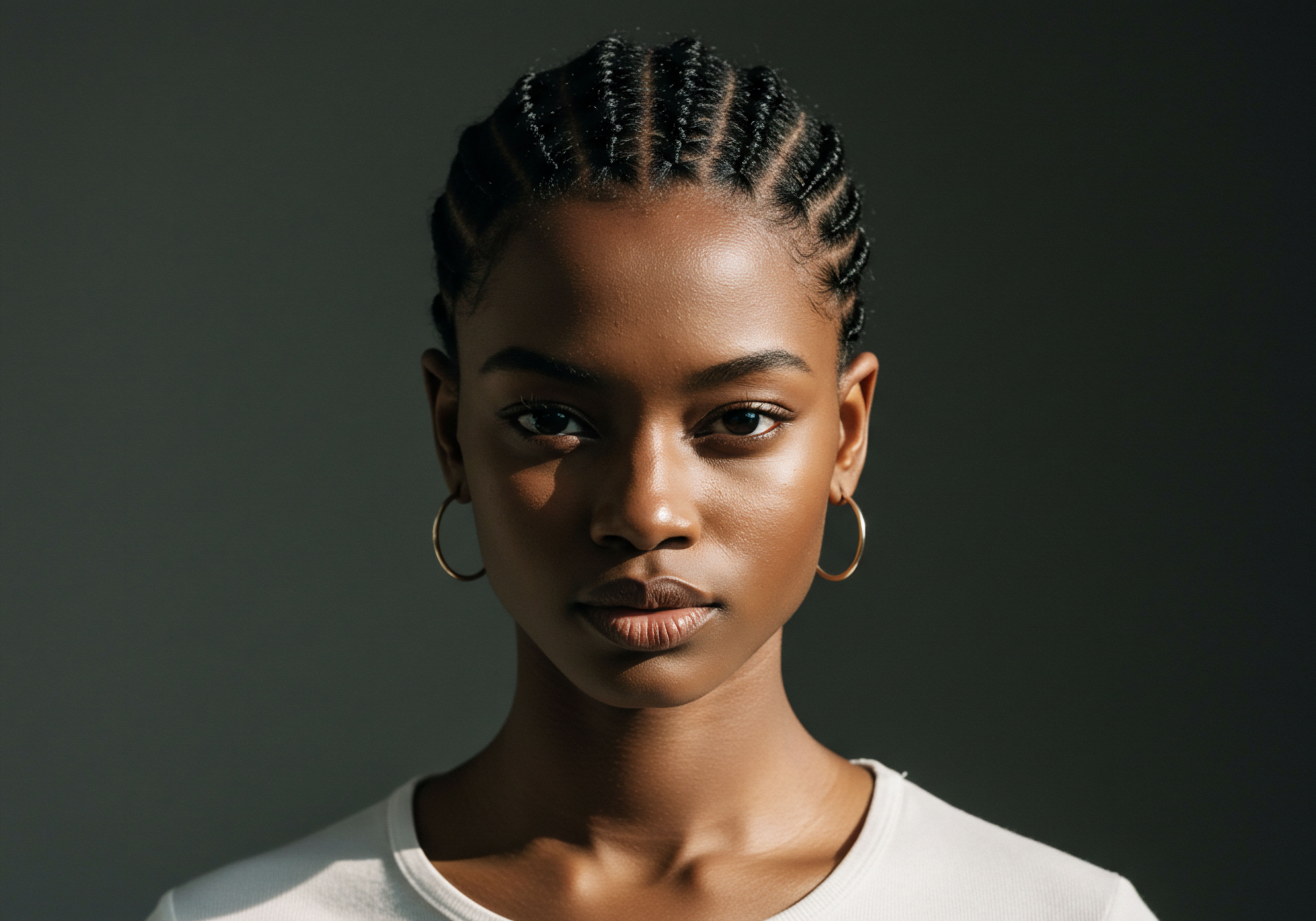
Relay
Beyond the immediate effects of sleep on cellular repair and the practicalities of nighttime care, there lies a more intricate web of connections, a relay of signals and responses that links our circadian rhythms to the very heart of hair follicle activity. This deeper investigation ventures into the sophisticated interplay of biological clocks, hormonal cascades, and even the subtle cultural nuances that shape our relationship with rest and, by extension, our hair. It is here that we begin to perceive the profound interconnectedness, understanding that the health of our hair is not merely a surface concern but a reflection of our body’s finely tuned internal symphony.
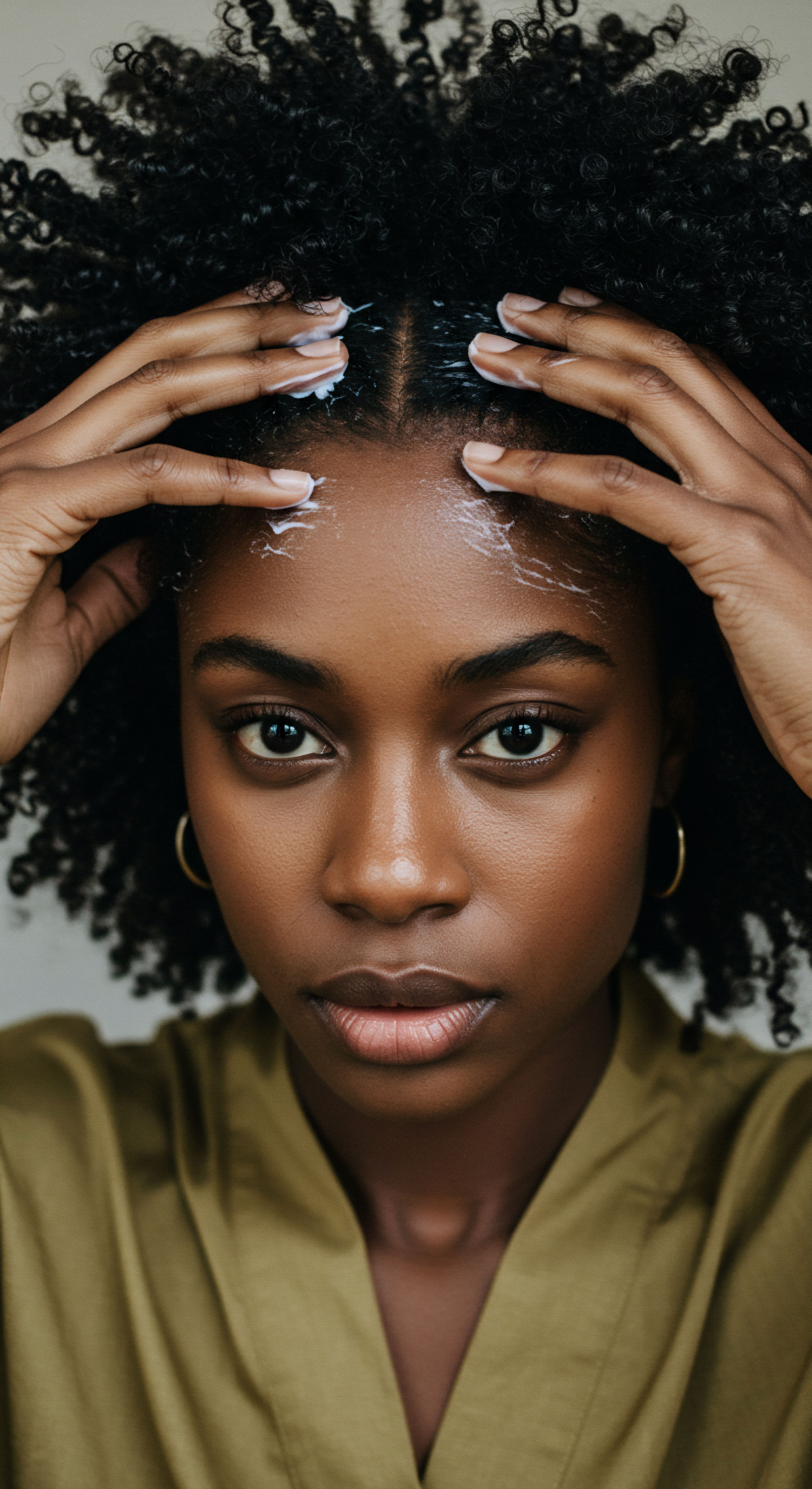
The Neuro-Endocrine Dance and Hair’s Response
The body’s neuro-endocrine system, a complex network of nerves and glands, acts as the conductor of our internal orchestra, orchestrating responses to internal and external cues. Sleep plays a critical part in regulating this system. When sleep patterns are disrupted, particularly chronic sleep deprivation, the body perceives this as a form of stress. This perception triggers the release of stress hormones, primarily cortisol, from the adrenal glands.
Elevated cortisol levels have been shown to have a detrimental impact on hair follicles. They can push follicles prematurely from the anagen (growth) phase into the catagen (transitional) or telogen (resting/shedding) phases, leading to conditions like telogen effluvium, a temporary but often distressing form of hair thinning.
Moreover, the pineal gland, a small endocrine gland in the brain, produces melatonin, a hormone known for regulating sleep-wake cycles. While its primary role is in sleep, research has unveiled another fascinating aspect ❉ melatonin receptors are present in human hair follicles. This suggests a direct role for melatonin in hair growth regulation. A study by Fischer et al.
(2004) demonstrated that topical application of melatonin could stimulate hair growth in humans, indicating its potential as a direct growth stimulant and not just an indirect benefit through sleep regulation. This suggests that disruptions in natural melatonin production, often a consequence of irregular sleep schedules or exposure to artificial light at night, could have a direct, adverse impact on hair follicle proliferation and health.

Chronobiology and Follicle Rhythms
Every cell in our body, including those within hair follicles, possesses its own internal clock, synchronized by the master clock in the brain’s suprachiasmatic nucleus (SCN). This field of study, chronobiology, examines these biological rhythms. Hair follicles exhibit their own circadian rhythms, with cell division and metabolic activity peaking at certain times of the day and night. For instance, studies indicate that follicular cell proliferation might be most active during the night, aligning with the body’s overall restorative processes.
When our sleep patterns are erratic, as is common with shift work, frequent jet lag, or inconsistent bedtimes, these internal clocks become desynchronized. This state, often referred to as ‘social jet lag,’ can confuse the follicle’s inherent rhythm, potentially disrupting optimal growth phases and repair mechanisms. The body’s ability to coordinate these cellular activities relies heavily on consistent, high-quality sleep, making a predictable sleep schedule a silent guardian of hair vitality.

Stress, Sleep Disruption, and Hair’s Vulnerability
The link between stress and hair loss is well-documented, but the underlying mechanism often involves sleep disruption. When we are stressed, our sleep is often compromised—difficulty falling asleep, frequent awakenings, or less time in restorative deep sleep. This fragmented sleep prevents the body from fully engaging its repair protocols. The prolonged elevation of stress hormones, coupled with the diminished regenerative capacity of poor sleep, creates a hostile environment for hair follicles.
For individuals with textured hair, who may already navigate specific challenges related to moisture balance and structural fragility, this stress-sleep-hair nexus can be particularly impactful. The cumulative effect of compromised follicle health and increased external stressors can manifest as persistent shedding, slowed growth, or a noticeable decline in hair quality. Addressing sleep quality, therefore, becomes a critical component of any holistic hair care regimen, reaching beyond superficial treatments to the core of cellular well-being.
Irregular sleep patterns can desynchronize the hair follicle’s intrinsic biological clock, impeding its natural growth and repair rhythms.
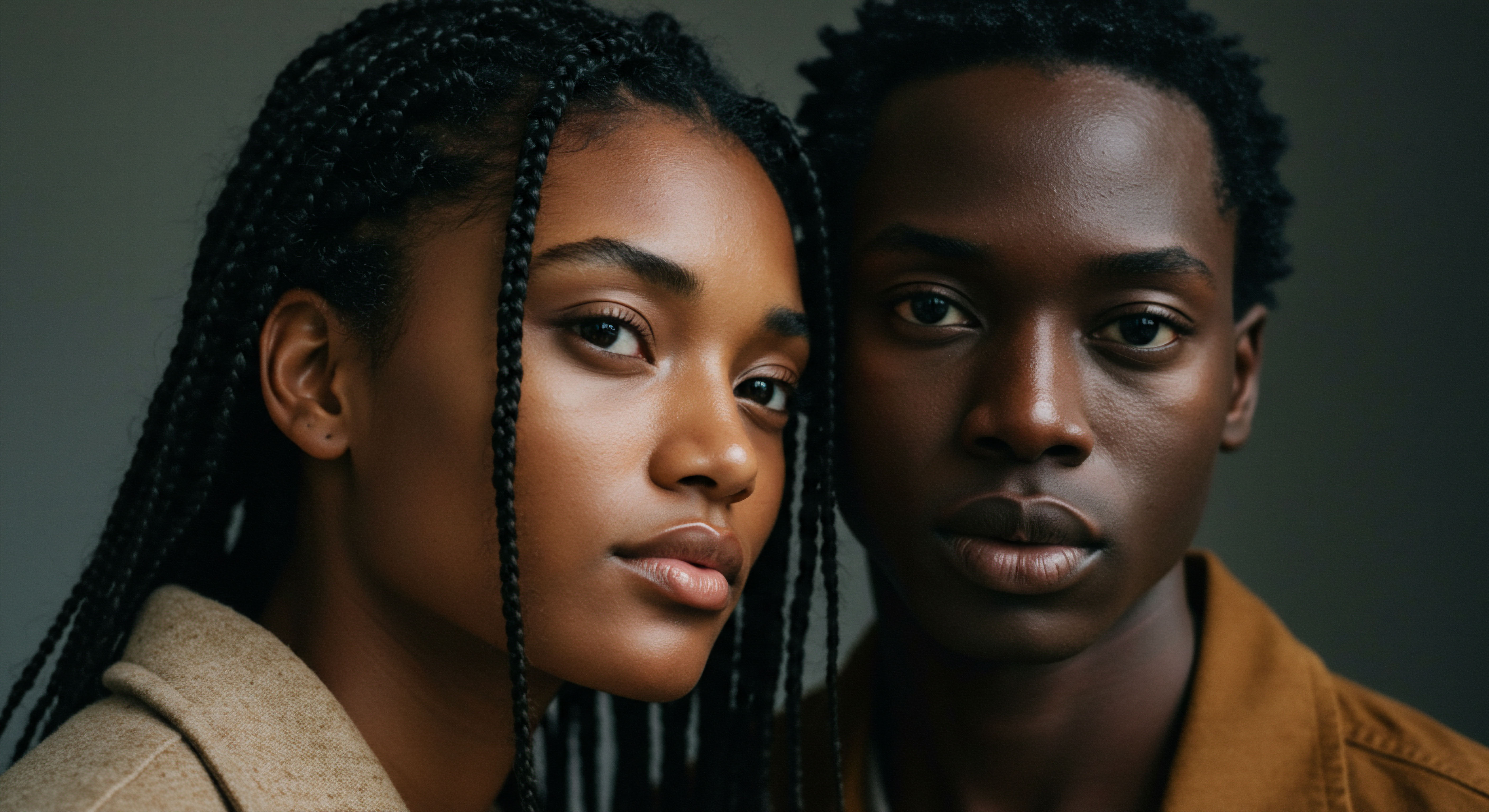
Cultural Perspectives on Rest and Hair Vitality
Across various cultures, especially those with rich traditions surrounding hair, the significance of rest and restoration often intertwines with practices of hair care. Historically, many cultures have revered hair as a symbol of strength, identity, and vitality. This reverence often extended to practices that honored the body’s need for repose. Traditional healing systems frequently emphasize the importance of balancing internal energies, which implicitly includes sufficient sleep, as a foundation for overall well-being, hair health included.
Consider the ancestral wisdom embedded in the notion of ‘beauty sleep’ – a concept that transcends mere vanity to speak to the profound regenerative power of nightly rest. While modern science quantifies the hormonal and cellular benefits, these ancient perspectives understood the holistic connection between a rested body and a vibrant appearance. For textured hair, which holds deep cultural significance for many, the intentional act of protecting it during sleep—through braids, wraps, or bonnets—is a testament to this understanding, a physical manifestation of the belief that our hair deserves diligent care even as we rest.
| Sleep Stage Non-REM (NREM) Stage 3 (Deep Sleep) |
| Key Characteristics Slow-wave activity, growth hormone release, cellular repair. |
| Potential Hair Follicle Relevance Optimal period for hair matrix cell proliferation and follicle regeneration. |
| Sleep Stage REM Sleep |
| Key Characteristics Dreaming, increased brain activity, muscle atonia. |
| Potential Hair Follicle Relevance Less direct, but essential for mental restoration, reducing stress hormones that impact follicles. |
| Sleep Stage Sleep Fragmentation |
| Key Characteristics Frequent awakenings, disturbed sleep architecture. |
| Potential Hair Follicle Relevance Prevents sustained restorative processes, elevates stress, disrupts follicular rhythms. |
| Sleep Stage Each sleep stage contributes uniquely to the body's restorative processes, indirectly and directly influencing hair health. |
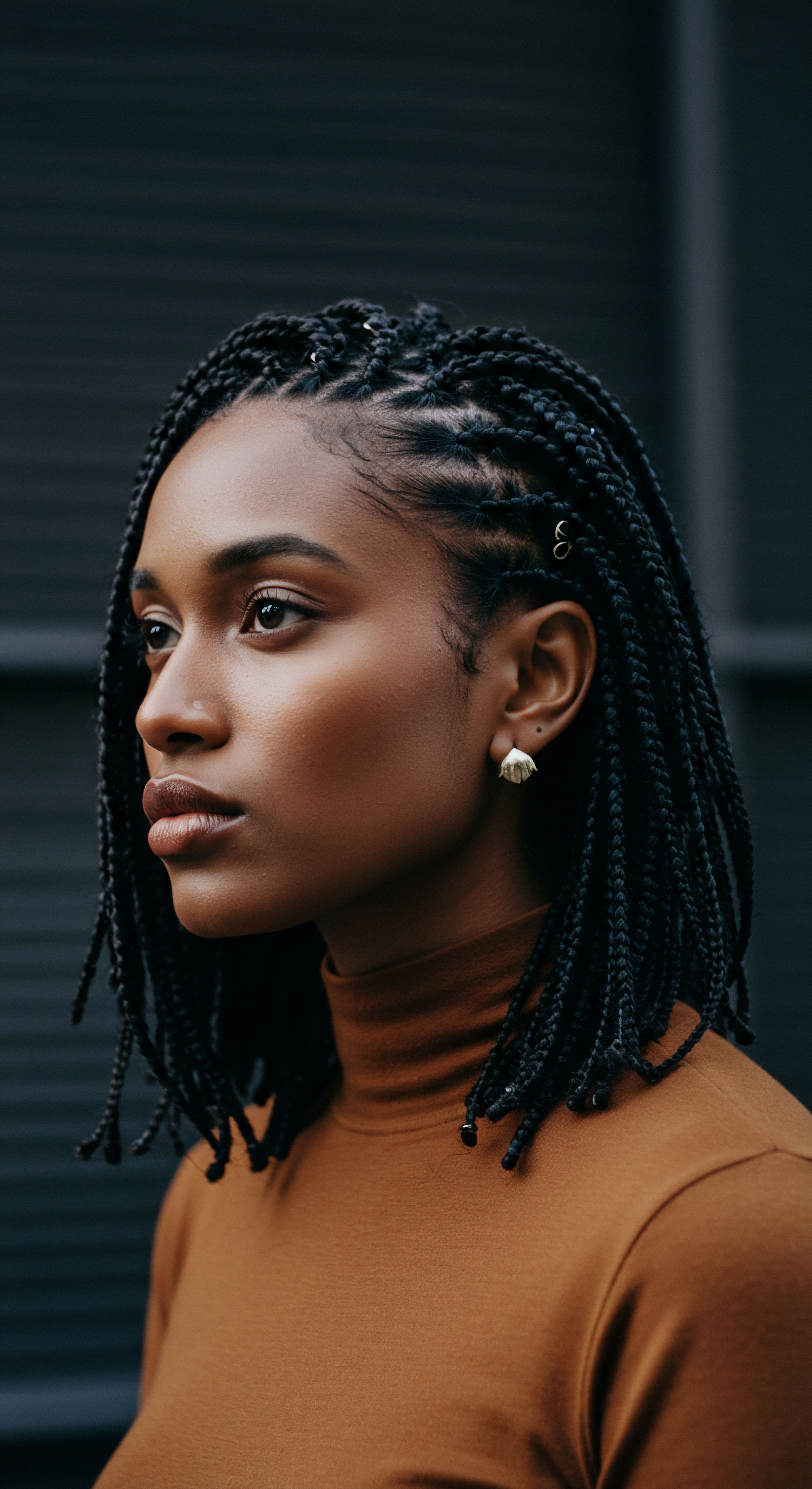
Can Irregular Sleep Schedules Cause Hair Thinning?
Yes, irregular sleep schedules can indeed contribute to hair thinning. The body operates on a finely tuned internal clock, the circadian rhythm, which dictates various physiological processes, including hormone secretion and cell division. When sleep patterns are inconsistent—such as going to bed at vastly different times each night, or experiencing chronic sleep deprivation—this rhythm becomes disrupted.
This desynchronization leads to several outcomes detrimental to hair. Firstly, it can impair the optimal release of growth hormone, which is critical for the active growth phase of hair. Secondly, erratic sleep often elevates cortisol levels, a stress hormone known to prematurely push hair follicles into the resting and shedding phases. Thirdly, the cellular repair mechanisms that are most active during deep, uninterrupted sleep are compromised, leaving hair follicles less resilient and more vulnerable to external stressors.
Over time, this consistent disruption can manifest as increased shedding and a noticeable reduction in hair density. The cumulative effect of these physiological shifts underscores the importance of a consistent sleep routine for maintaining robust hair.
For textured hair, which often requires consistent moisture and strength to prevent breakage, the added vulnerability from compromised follicle health due to irregular sleep can be particularly pronounced, making strands more susceptible to damage and appearing thinner.
The body’s internal clock, when disrupted by irregular sleep, can directly impact hair follicle activity, leading to compromised growth.
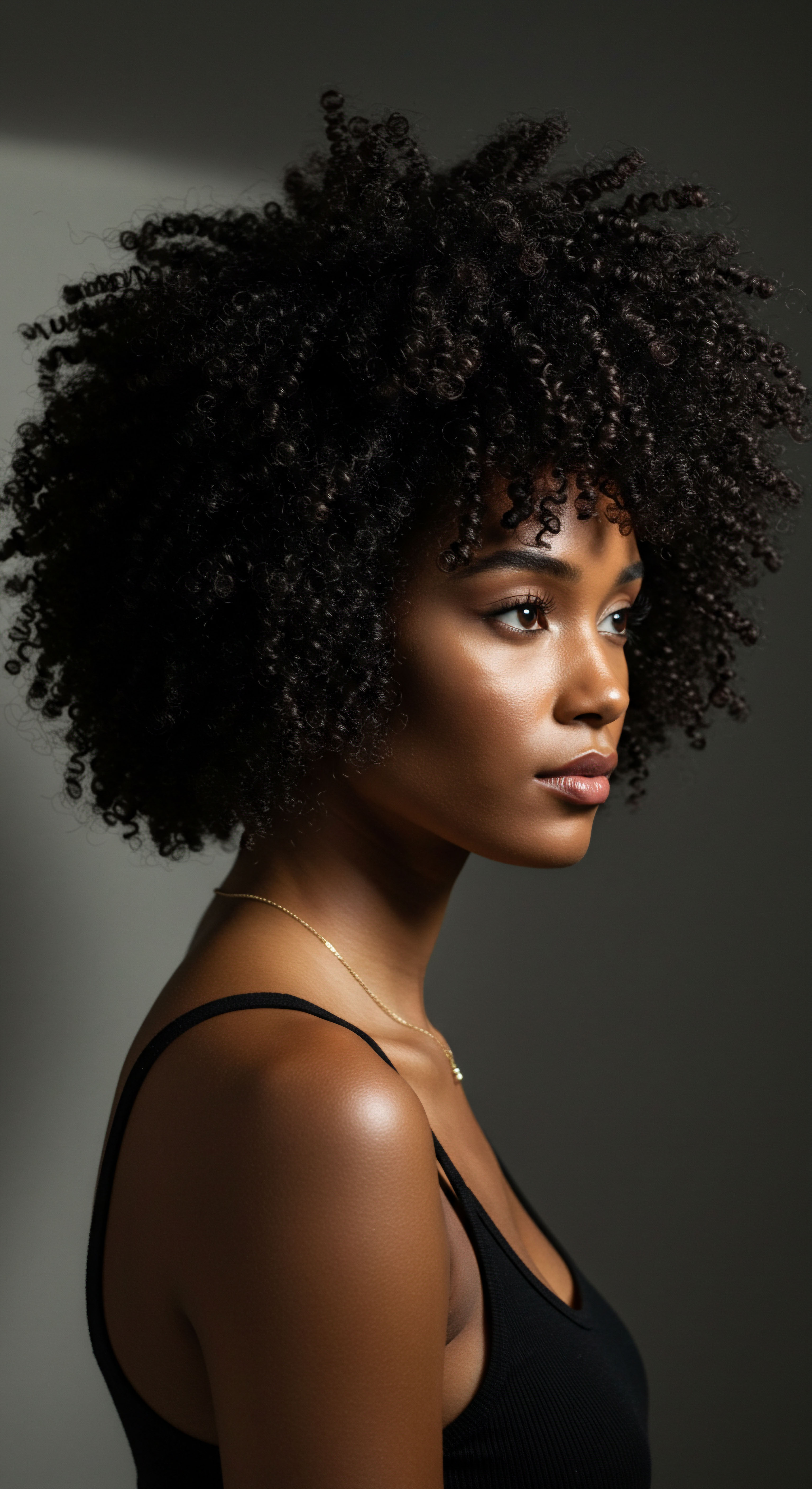
Reflection
The journey into the quiet hours of sleep reveals a landscape far more dynamic than mere repose. It is a time when our bodies, in their innate wisdom, seek balance and restoration, a rhythm that extends its gentle influence to the very strands that crown us. For textured hair, a heritage worn with pride and distinction, the connection to our sleep patterns is not a footnote but a fundamental chapter in its story of vitality. To honor our hair, then, is to honor our rest, to recognize that the strength and radiance we seek begins in the quietude of a well-tended night.

References
- Fischer, T. W. Burmeister, G. Schmidt, N. & Elsner, P. (2004). Melatonin increases anagen hair growth in women with androgenetic alopecia or diffuse alopecia ❉ results of a pilot study. Journal of Pineal Research, 36(3), 213-216.
- Hardeland, R. Pandi-Perumal, S. R. & Cardinali, D. P. (2006). Melatonin. International Journal of Biochemistry & Cell Biology, 38(3), 310-316.
- Garg, A. & Maheshwari, A. (2018). Stress and Hair Loss. Journal of Clinical & Diagnostic Research, 12(1), WE01-WE02.
- Oh, J. W. Kloepper, J. E. & Paus, R. (2016). The hair follicle as a circadian clock. Journal of Investigative Dermatology, 136(6), 1107-1114.
- Paus, R. & Cotsarelis, G. (1999). The Biology of Hair Follicles. The New England Journal of Medicine, 341(7), 491-497.
- Rushton, D. H. (2002). Nutritional factors and hair loss. Clinical and Experimental Dermatology, 27(5), 396-404.
- Sharma, M. & Singh, R. (2020). Circadian rhythm disruption and human health. Indian Journal of Clinical Biochemistry, 35(1), 1-11.
- Slominski, A. Wortsman, J. & Tobin, D. J. (2005). The skin as an endocrine organ. Clinical Endocrinology, 63(6), 613-620.